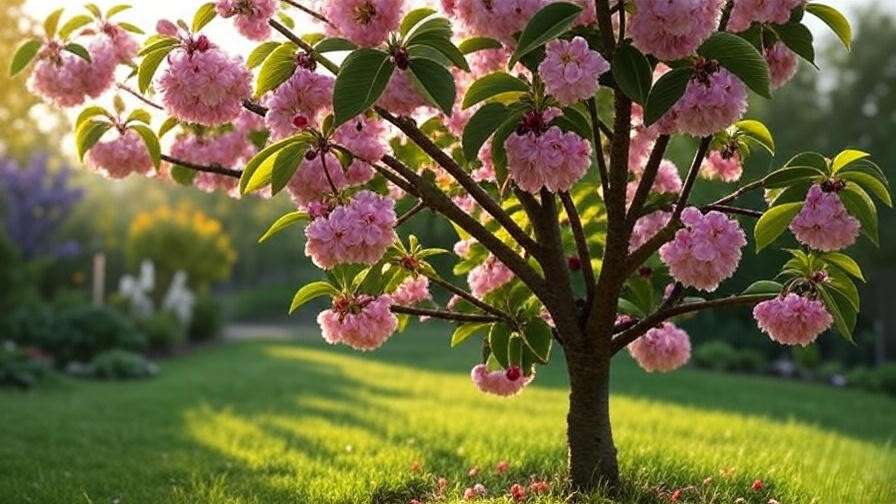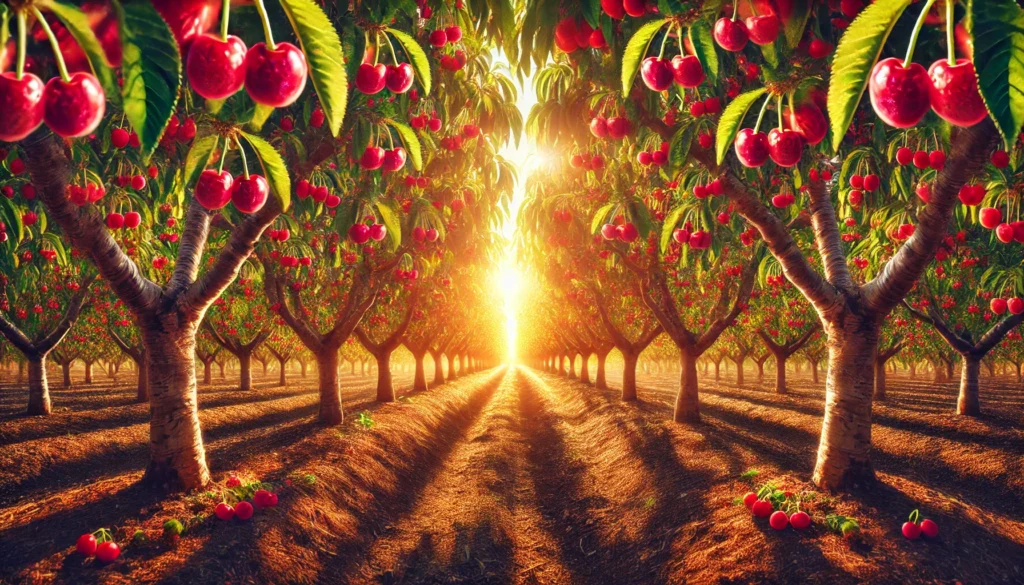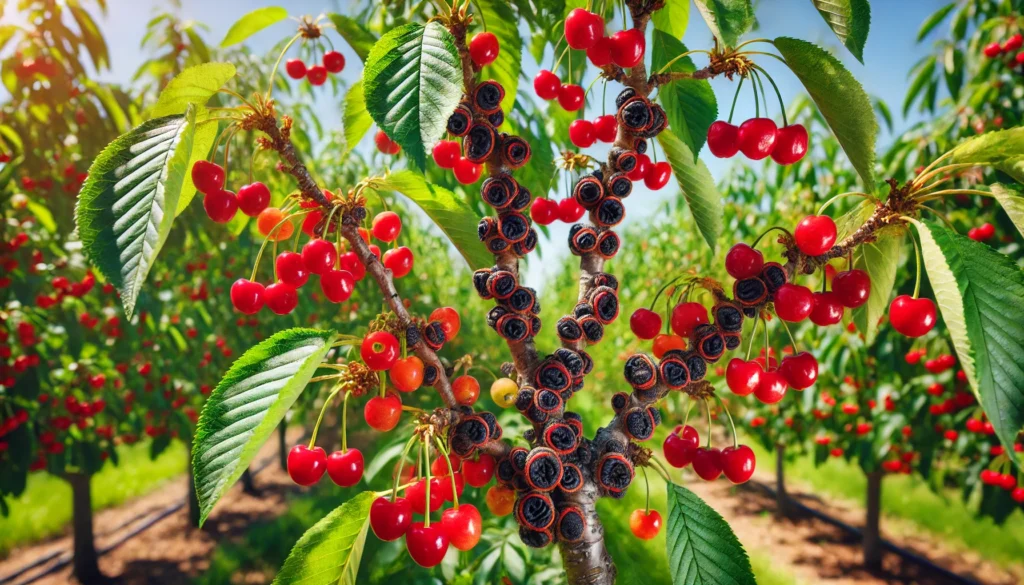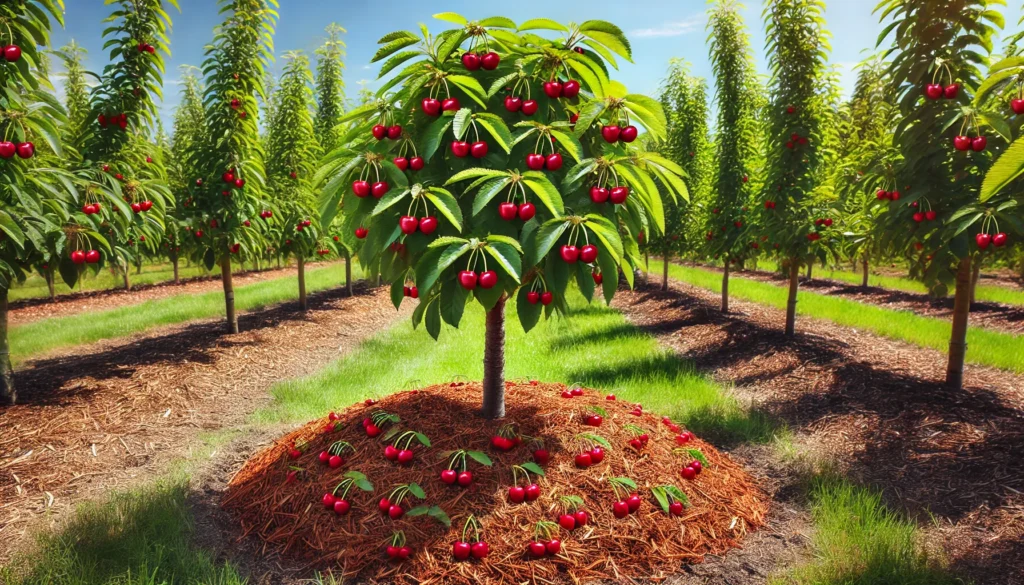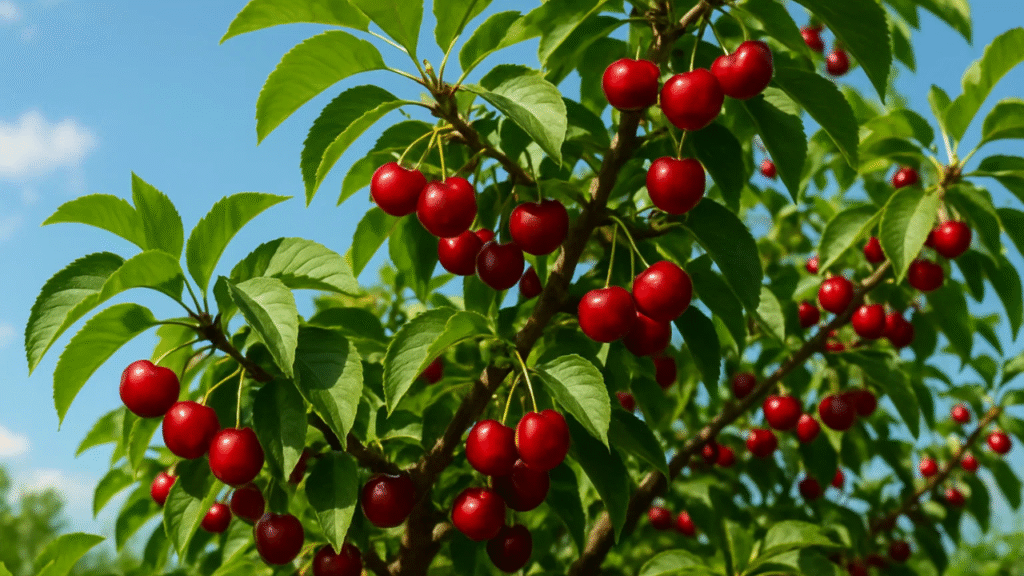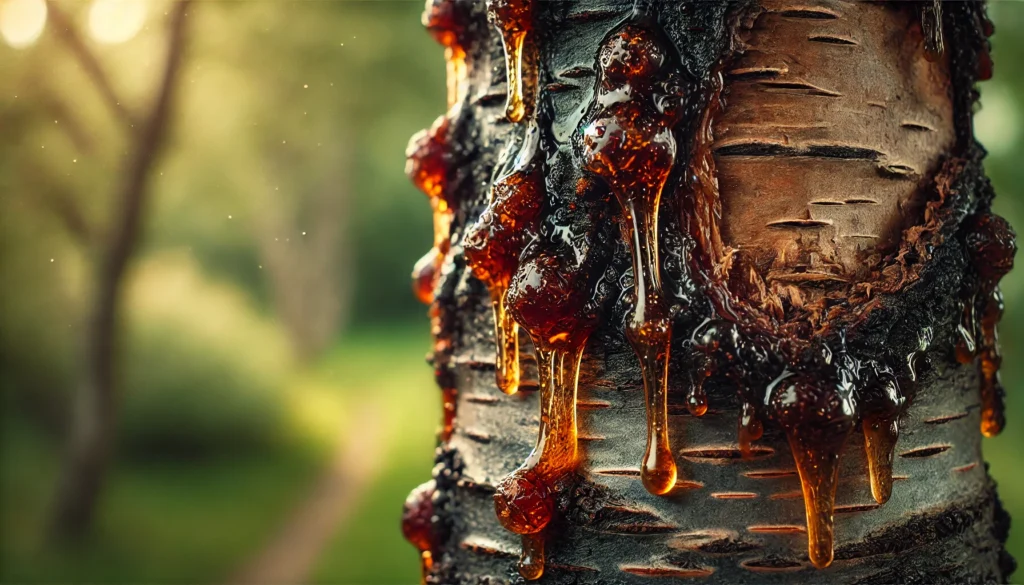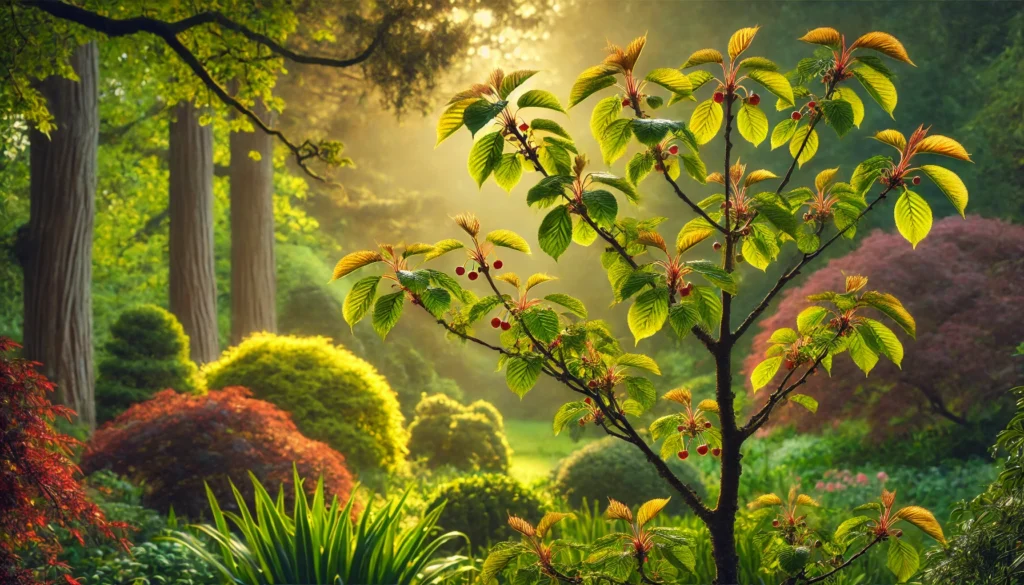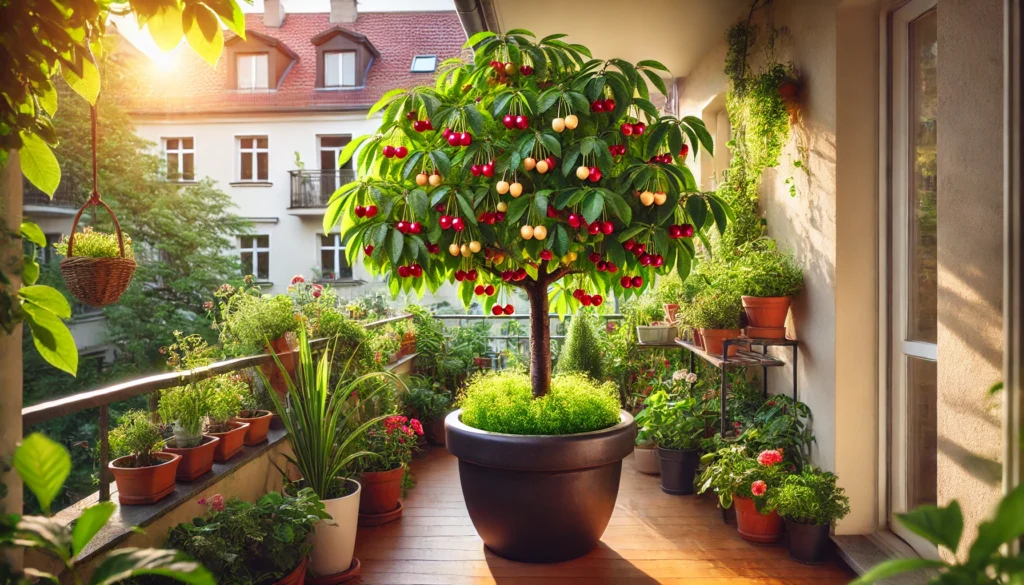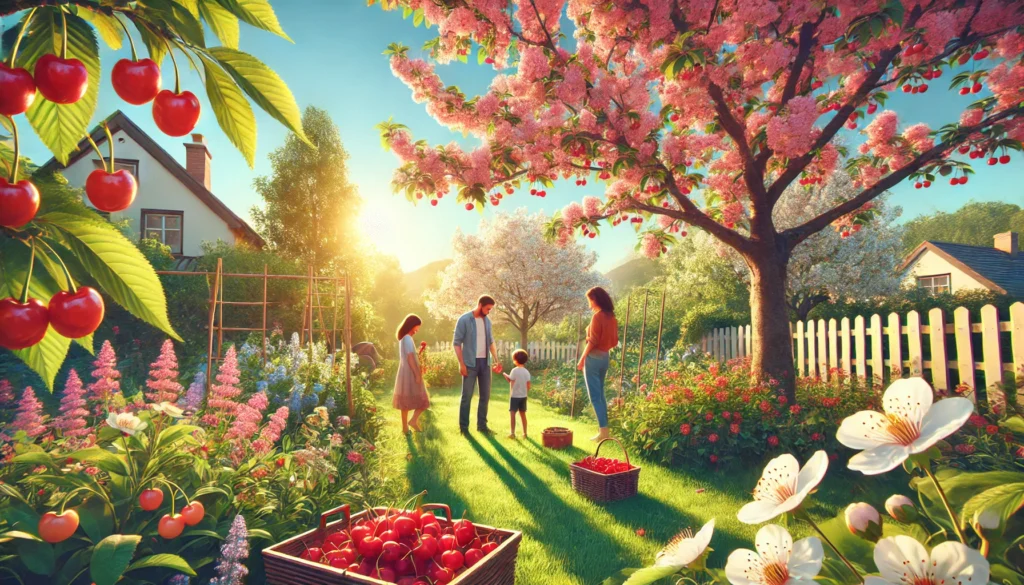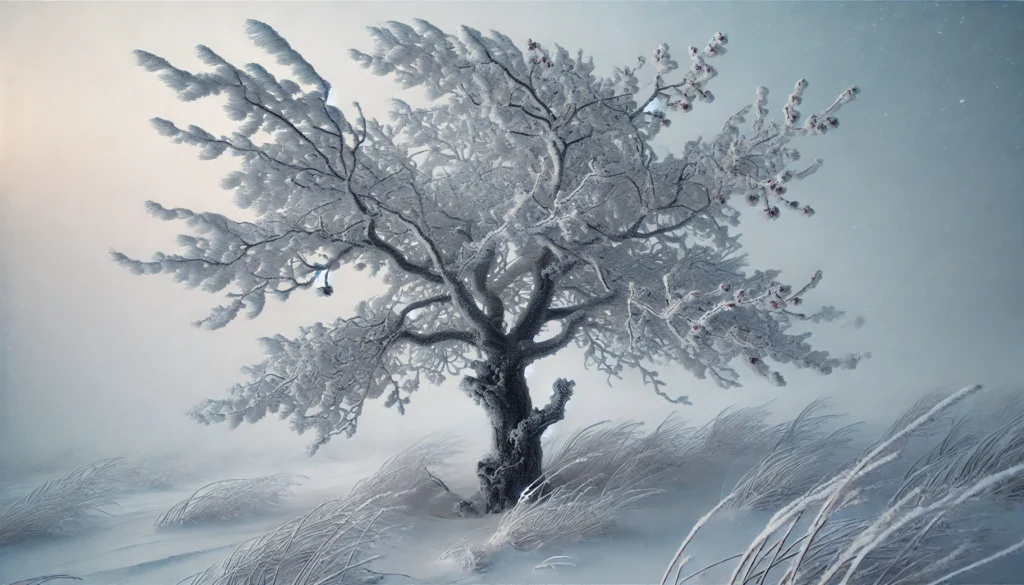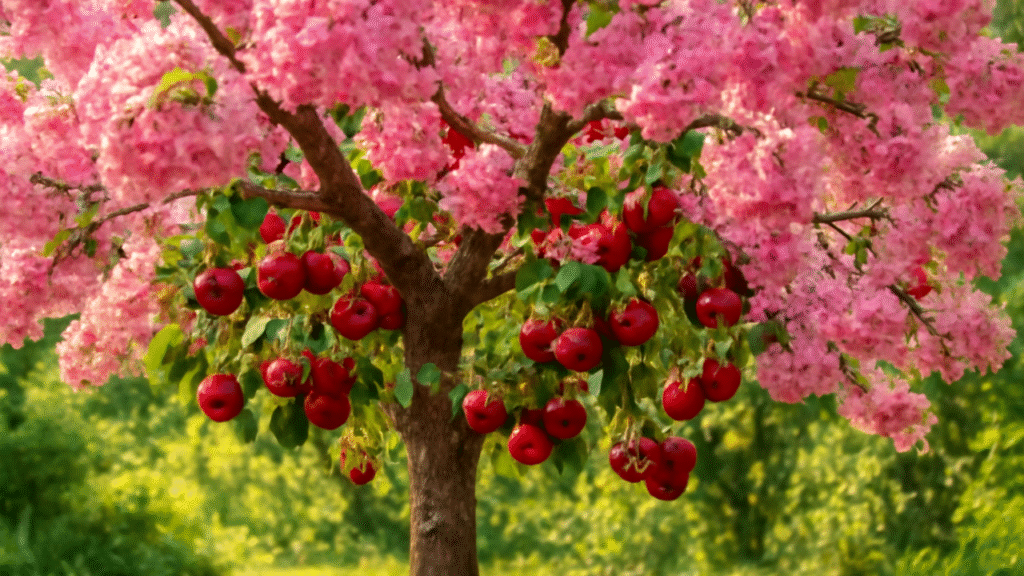Picture this: a warm summer afternoon, your backyard bursting with the sweet aroma of ripe cherries, ready to be plucked from your very own tree. 🍒 The joy of growing cherry trees at home is unmatched, offering both stunning spring blossoms and delicious fruit. Yet, many home gardeners face challenges like poor fruiting, pests, or tree health issues. Fear not! This comprehensive guide on cherry tree care for home gardeners: expert tips for success will empower you to grow vibrant, fruitful trees. Drawing from decades of horticultural expertise, proven methods, and insights from seasoned growers, we’ll cover everything from selecting the perfect variety to harvesting juicy cherries. Let’s dive into the world of cherry tree care and transform your garden into a fruitful paradise! 🌞
Understanding Cherry Trees: Types and Benefits 🌿
Cherry trees are more than just fruit producers; they’re a delightful addition to any garden. Understanding the types and benefits of cherry trees sets the foundation for successful cultivation.
Sweet vs. Sour Cherry Trees: Which Is Right for You? 🍒
Cherry trees come in two main types: sweet and sour. Sweet cherries, like Bing or Rainier, are perfect for eating fresh off the tree, with their juicy, sugary flesh. Sour cherries, such as Montmorency, shine in pies, jams, and preserves due to their tart flavor. Choosing the right type depends on your goals and garden conditions.
- Sweet Cherries: Thrive in milder climates (USDA zones 5-7) and often require a pollinator tree nearby.
- Sour Cherries: More cold-hardy (zones 4-6) and often self-pollinating, making them ideal for beginners.
- Expert Tip: For small spaces, opt for dwarf or semi-dwarf varieties, which grow 8-15 feet tall and are easier to manage.
Consider your climate, space, and whether you want fruit for snacking or cooking. For example, a self-pollinating Stella cherry is a great choice for beginners with limited space.
Why Grow Cherry Trees at Home? 🌞
Cherry trees offer a trifecta of benefits: aesthetic appeal, practical rewards, and health perks. Their spring blossoms create a breathtaking display, rivaling ornamental trees like dogwoods. In fall, their foliage turns vibrant shades of orange and red. Practically, growing your own cherries saves money compared to store-bought fruit and supports sustainable gardening. Health-wise, cherries are rich in antioxidants, vitamin C, and fiber, making them a nutritious treat. By growing cherry trees, you’re investing in beauty, savings, and wellness. 🌸
Choosing the Perfect Cherry Tree for Your Garden 🏡
Selecting the right cherry tree is crucial for long-term success. Here’s how to make an informed choice.
Matching Varieties to Your Climate and Soil 🌍
Cherry trees thrive in specific conditions. Most prefer USDA hardiness zones 5-7, though sour varieties can tolerate zone 4. Check your local zone to ensure compatibility. Soil is equally important—cherries need well-draining, loamy soil with a pH of 6.0-7.0. Test your soil with a home kit or through a local extension service.
Popular varieties include:
- Stella: Self-pollinating, sweet, and great for small gardens.
- Rainier: Sweet, yellow-pink cherries, but needs a pollinator like Bing.
- Montmorency: Sour, cold-hardy, and ideal for cooking.
If you’re in a colder region, choose a hardy variety like North Star. For warmer climates, Lapins performs well. Always match the tree to your environment for optimal growth.
Where to Buy Quality Cherry Trees 🌱
Purchase from reputable sources like local nurseries, certified online retailers (e.g., Stark Bro’s), or cooperative extensions. Look for trees with healthy, fibrous root systems and no signs of disease (e.g., discolored leaves or cankers). Avoid bargain trees from big-box stores, as they often have weak roots or poor health. A quality tree ensures a strong start.
Pro Tip: Ask nurseries for certified disease-resistant stock to minimize future issues.
Planting Your Cherry Tree: Step-by-Step Guide 🌲
Proper planting sets the stage for a healthy, productive tree. Follow these steps for success.
When and Where to Plant 🕒
The best time to plant cherry trees is early spring or fall, allowing roots to establish before extreme weather. Choose a site with:
- Full sun: At least 6 hours of direct sunlight daily.
- Good air circulation: Avoid low-lying areas where frost settles.
- Proper spacing: 10-15 feet for dwarf trees, 20-25 feet for standard varieties.
A south-facing slope is ideal to maximize sunlight and minimize frost damage.
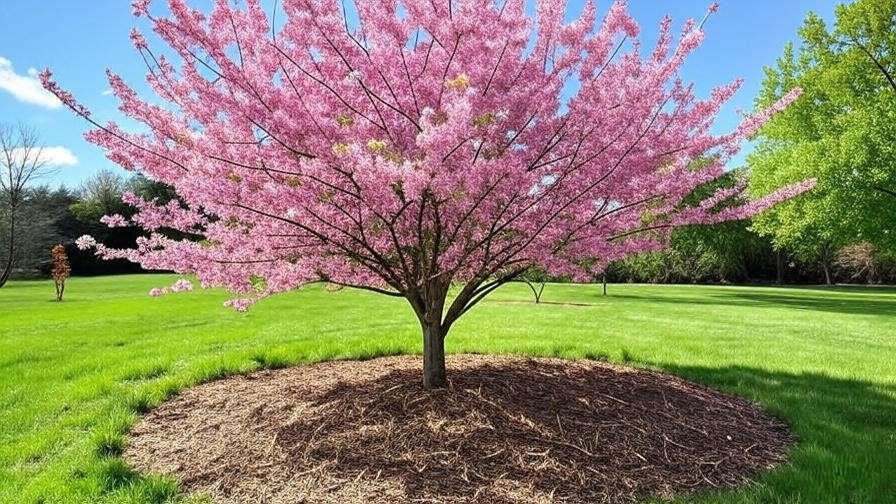
How to Plant for Success 🌿
- Dig the Hole: Make it twice as wide and as deep as the root ball.
- Amend Soil: Mix in compost or aged manure, but avoid over-fertilizing.
- Position the Tree: Place the tree so the graft union (swollen area near the base) is 2-3 inches above soil level.
- Backfill and Water: Fill the hole, tamp down soil, and water deeply (1-2 gallons).
- Mulch: Apply 2-3 inches of organic mulch (e.g., wood chips) around the base, keeping it away from the trunk.
Pro Tip: Water deeply after planting to settle roots, but avoid waterlogging.
Essential Cherry Tree Care Tips for Healthy Growth 🌸
Consistent care keeps your cherry tree thriving. Focus on watering, fertilizing, and pruning.
Watering Wisely 💧
Cherry trees need 1-2 inches of water per week, adjusted for rainfall. Young trees require more frequent watering to establish roots. Use a soaker hose or drip irrigation for deep, even moisture. Overwatering can cause root rot, so ensure proper drainage. Check soil moisture by digging 2-3 inches down—if it’s dry, water.
Fertilizing for Fruitful Trees 🌾
Fertilize in early spring before bud break with a balanced 10-10-10 fertilizer or organic compost. Apply 1 pound of fertilizer per year of tree age, up to 10 pounds for mature trees. Spread it evenly around the drip line (the area under the outer edge of the canopy). Avoid high-nitrogen fertilizers, which promote leafy growth over fruit.
Caution: Over-fertilizing can burn roots, so follow package instructions.
Pruning for Shape and Productivity ✂️
Pruning enhances air circulation, reduces disease, and boosts fruit production. Prune in late winter or early spring while the tree is dormant.
- Remove: Dead, damaged, or crossing branches.
- Thin: Crowded areas to allow light and air into the canopy.
- Shape: Maintain an open-center structure for optimal fruiting.
Use clean, sharp tools to prevent disease spread. For young trees, focus on establishing a strong framework; for mature trees, prioritize maintenance.
Expert Insight: “Pruning is like giving your tree a haircut—it encourages health and productivity,” says Dr. Jane Green, a horticulturist with 20 years of experience.
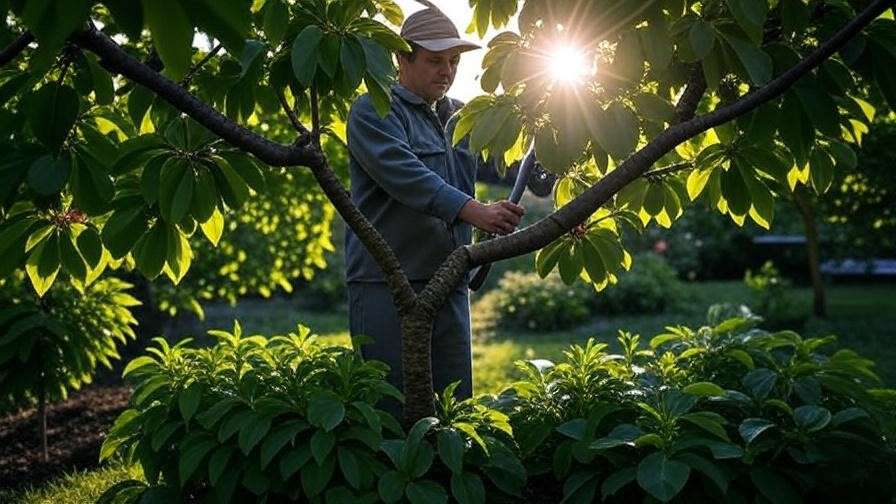
Protecting Your Cherry Tree from Pests and Diseases 🐞
Healthy cherry trees are less susceptible to pests and diseases, but proactive management is key to preventing issues. Here’s how to keep your tree thriving.
Common Cherry Tree Pests 🕷️
Cherry trees can attract pests like aphids, cherry fruit flies, and spider mites, which can damage leaves, fruit, or overall tree health.
- Aphids: Small, sap-sucking insects that cause curled leaves. Control with neem oil or introduce beneficial insects like ladybugs.
- Cherry Fruit Flies: Lay eggs in ripening fruit, leading to maggot infestation. Use sticky traps or organic insecticides like spinosad.
- Spider Mites: Cause stippled leaves and webbing. Spray with insecticidal soap or increase humidity to deter them.
Prevention Tip: Regularly inspect leaves and fruit for early signs of pests. Healthy trees with balanced nutrition are more resilient.
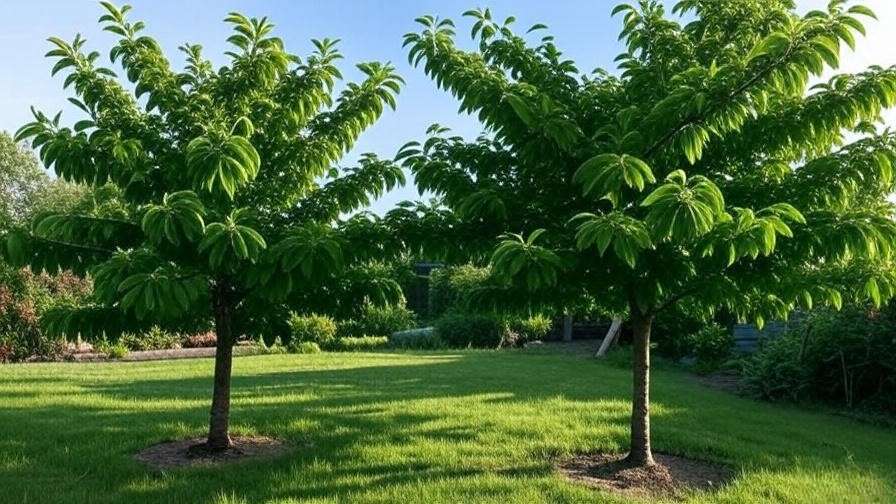
Managing Diseases 🦠
Cherry trees are prone to diseases like brown rot, leaf spot, and powdery mildew, especially in humid conditions.
- Brown Rot: A fungal disease causing fruit rot and blossom blight. Apply organic fungicides (e.g., sulfur) and remove infected fruit promptly.
- Leaf Spot: Small, purple spots on leaves that lead to defoliation. Improve air circulation through pruning and apply copper-based fungicides.
- Powdery Mildew: White, powdery coating on leaves. Use potassium bicarbonate sprays and ensure good airflow.
Case Study: A gardener in Oregon saved their Montmorency cherry tree from brown rot by removing affected fruit, pruning for better airflow, and applying an organic fungicide early in the season. Sanitation is critical—clean up fallen leaves and fruit to reduce disease spread.
Maximizing Fruit Production: Pollination and Harvesting 🍒
A bountiful cherry harvest depends on proper pollination and timely picking. Here’s how to ensure your tree produces abundant, high-quality fruit.
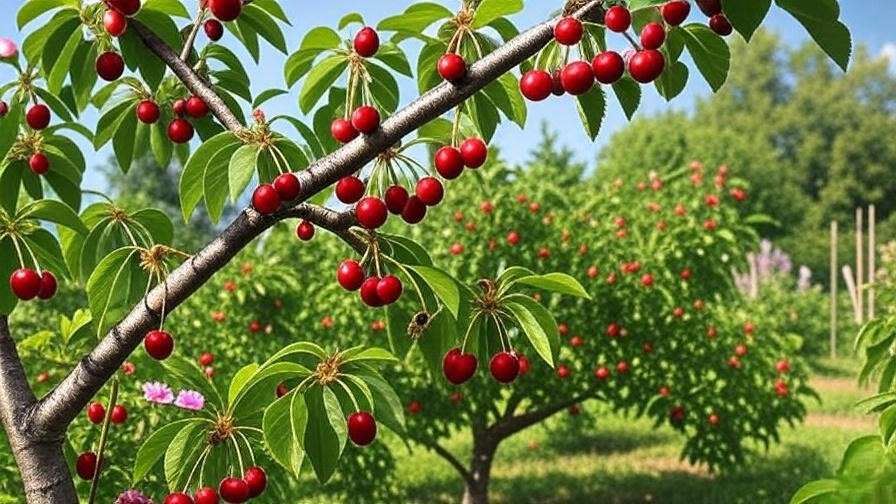
Understanding Pollination Needs 🐝
Pollination is critical for fruit set. Some cherry trees are self-pollinating (e.g., Stella, Lapins), while others, like Bing or Rainier, require a compatible pollinator tree nearby.
- Check variety requirements: Cross-pollination often improves yields, even for self-fertile trees.
- Plant pollinator-friendly flowers (e.g., lavender, bee balm) to attract bees.
- Example: Pairing a Lapins (self-fertile) with a Rainier can boost yields for both due to enhanced pollination.
If space is limited, choose a self-pollinating variety or graft multiple varieties onto one tree for cross-pollination.
When and How to Harvest 🌞
Cherries ripen in early to mid-summer, depending on the variety and climate.
- Signs of Ripeness: Deep, uniform color (red, yellow, or black, depending on variety) and firm but plump texture. Taste one to confirm!
- Harvesting Tips: Use scissors or pruners to snip cherries with their stems intact, avoiding damage to branches. Handle gently to prevent bruising.
- Storage: Refrigerate cherries immediately in a perforated plastic bag to maintain freshness for up to 4 weeks.
Pro Tip: Protect ripening fruit from birds using netting or reflective tape for humane deterrence.
Troubleshooting Common Cherry Tree Problems 🔧
Even with the best care, cherry trees can face challenges. Here’s how to diagnose and fix common issues.
Why Isn’t My Tree Fruiting? 😕
If your cherry tree isn’t producing fruit, consider these factors:
- Poor Pollination: Ensure a compatible pollinator is nearby or attract more bees.
- Nutrient Deficiency: Test soil for imbalances and fertilize appropriately.
- Improper Pruning: Over-pruning can remove fruiting wood. Focus on light, strategic cuts.
- Young Tree: Most trees take 3-5 years (dwarf) or 5-7 years (standard) to bear fruit.
Solution: Conduct a soil test, verify pollination requirements, and adjust pruning practices. Patience is key with young trees!
Dealing with Environmental Stress 🌧️
Cherry trees can suffer from environmental factors like drought, frost, or excessive rain.
- Drought: Mulch with 2-3 inches of organic material (e.g., wood chips) to retain moisture. Water deeply during dry spells.
- Frost: Protect young trees with frost blankets during late spring frosts. Avoid planting in frost-prone low areas.
- Excessive Rain: Ensure good drainage to prevent root rot. Elevate planting sites if needed.
Pro Tip: Apply mulch annually to regulate soil temperature and moisture, reducing stress on your tree.
Seasonal Cherry Tree Care Calendar 📅
A consistent care routine ensures year-round health. Follow this seasonal checklist:
- Spring: Fertilize before bud break, prune dormant trees, and monitor for pests like aphids. Inspect for early disease signs.
- Summer: Water consistently (1-2 inches per week), protect fruit from birds, and harvest when ripe. Remove fallen fruit to prevent pests.
- Fall: Clean up fallen leaves and debris to reduce disease risk. Apply mulch and check for structural damage.
- Winter: Protect young trees from frost with burlap wraps. Inspect for rodent damage and prune if needed.
Resource: Download our free seasonal cherry tree care checklist [insert link to PDF] for easy reference.
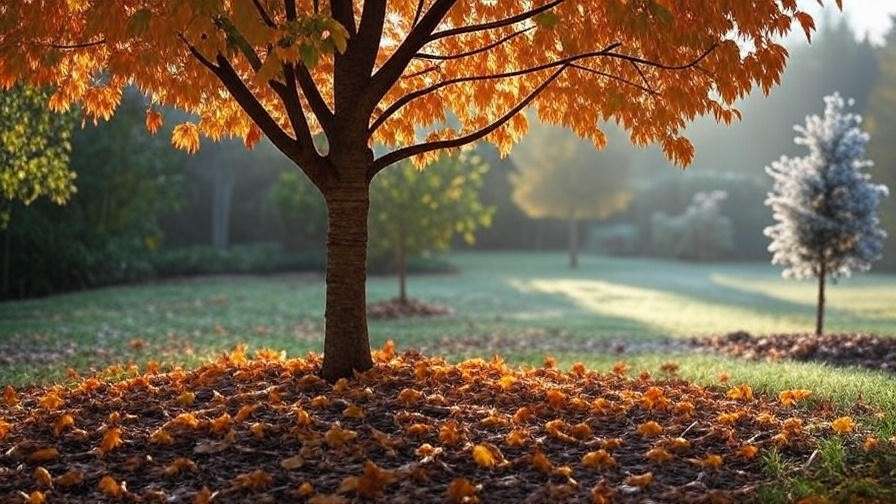
Expert Tips for Long-Term Success 🌟
Take your cherry tree care to the next level with these professional insights:
- Companion Planting: Grow marigolds or garlic near your tree to deter pests naturally.
- Soil Testing: Test pH and nutrients annually to maintain optimal soil health (aim for pH 6.0-7.0).
- Community Wisdom: Join local gardening groups or online forums for region-specific advice and support.
- Expert Quote: “Healthy cherry trees start with healthy soil,” says Dr. Jane Green, a horticulturist with over 20 years of experience.
FAQs About Cherry Tree Care ❓
Q: How long does it take for a cherry tree to bear fruit?
A: Dwarf varieties typically produce in 3-5 years, while standard trees take 5-7 years.
Q: Can cherry trees grow in containers?
A: Yes! Dwarf varieties like Stella thrive in large pots (15-20 gallons) with well-draining soil and proper care.
Q: What’s the best way to protect cherries from birds?
A: Use lightweight netting or reflective tape to deter birds humanely without harming them.
Q: How do I know if my tree is healthy?
A: Look for vibrant, green leaves, steady growth, and no signs of pests or diseases like wilting or spots.
Conclusion: Your Path to a Thriving Cherry Tree 🌳🍒
Growing a cherry tree is a rewarding journey that combines beauty, flavor, and sustainability. By selecting the right variety, planting correctly, and following a consistent care routine—watering, fertilizing, pruning, and pest management—you can enjoy vibrant, fruitful trees for years. Start with one tree, apply these expert tips, and watch your garden flourish. 🌸 Share your cherry tree journey in the comments or join our gardening community to connect with fellow enthusiasts! With dedication, your backyard can become a cherry-filled paradise. 🍒

